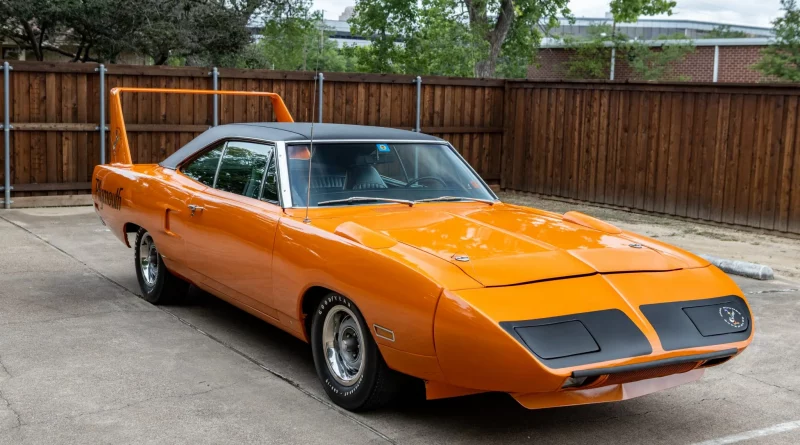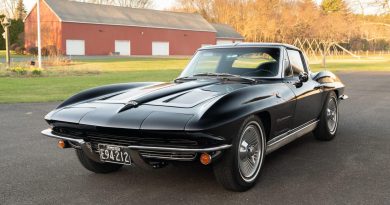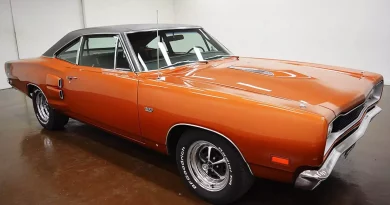1970 Plymouth Superbird
The Plymouth Superbird was a famous 2-door race car with a stellar resume. The iconic hot rod was based on the firm’s critically acclaimed mid-size sedan, the Plymouth Roadrunner, but in addition, it featured a host of tasteful upgrades that helped it conquer the NASCAR circuit with authority. The Superbird incorporated several design cues from its sister car, the Charger Daytona, but distinguished itself as a racer with the addition of an enormous rear spoiler as well as a cone-shaped front end that helped refine its aerodynamic capabilities.
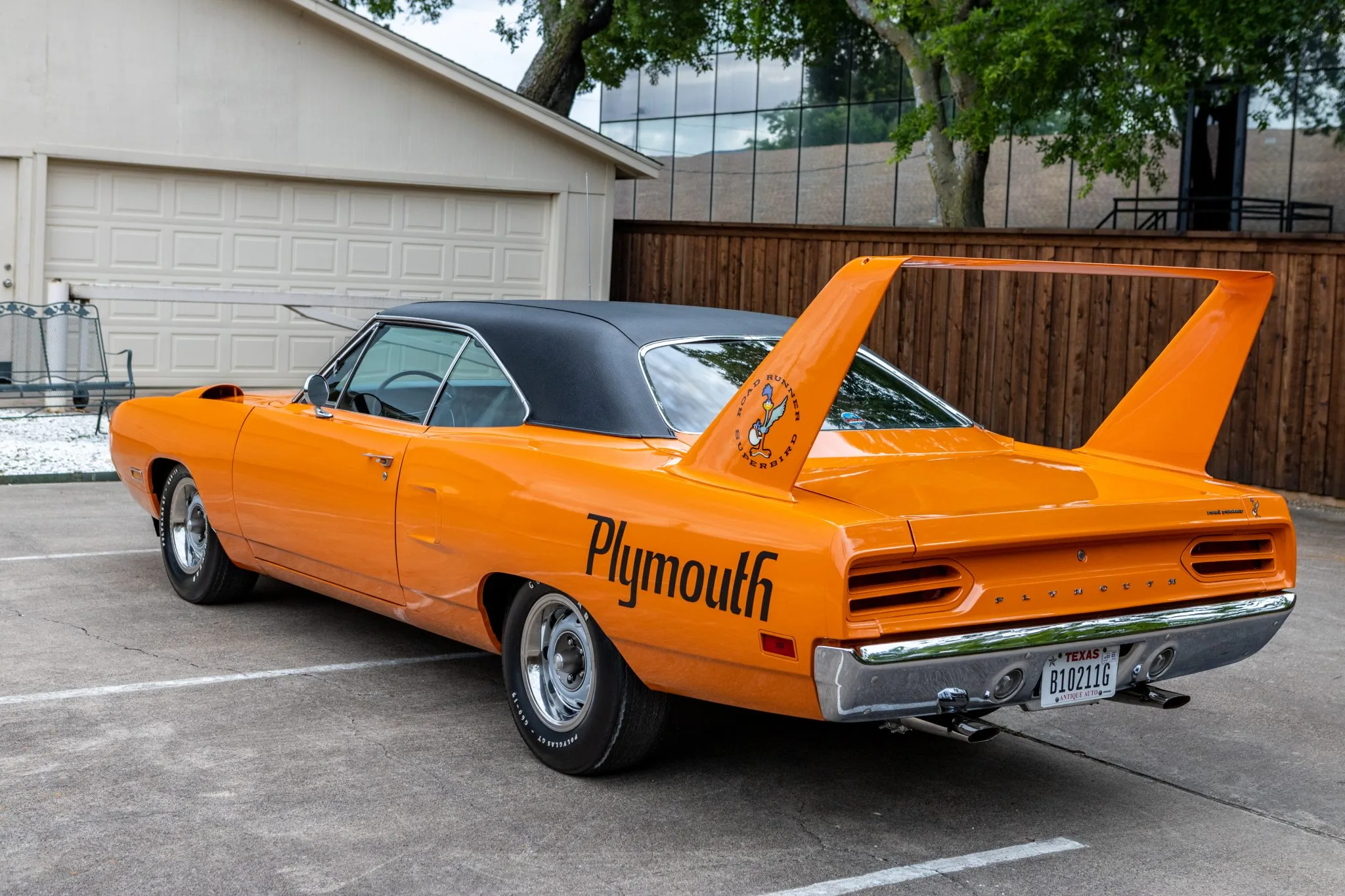
The 1970 Plymouth Superbird was undeniably one of the most radically designed muscle cars to enter the NASCAR racing scenario. The Superbird, in essence, was a modified version of the revered Plymouth Road Runner, with its overall design language inspired by the likes of the Charger Daytona.
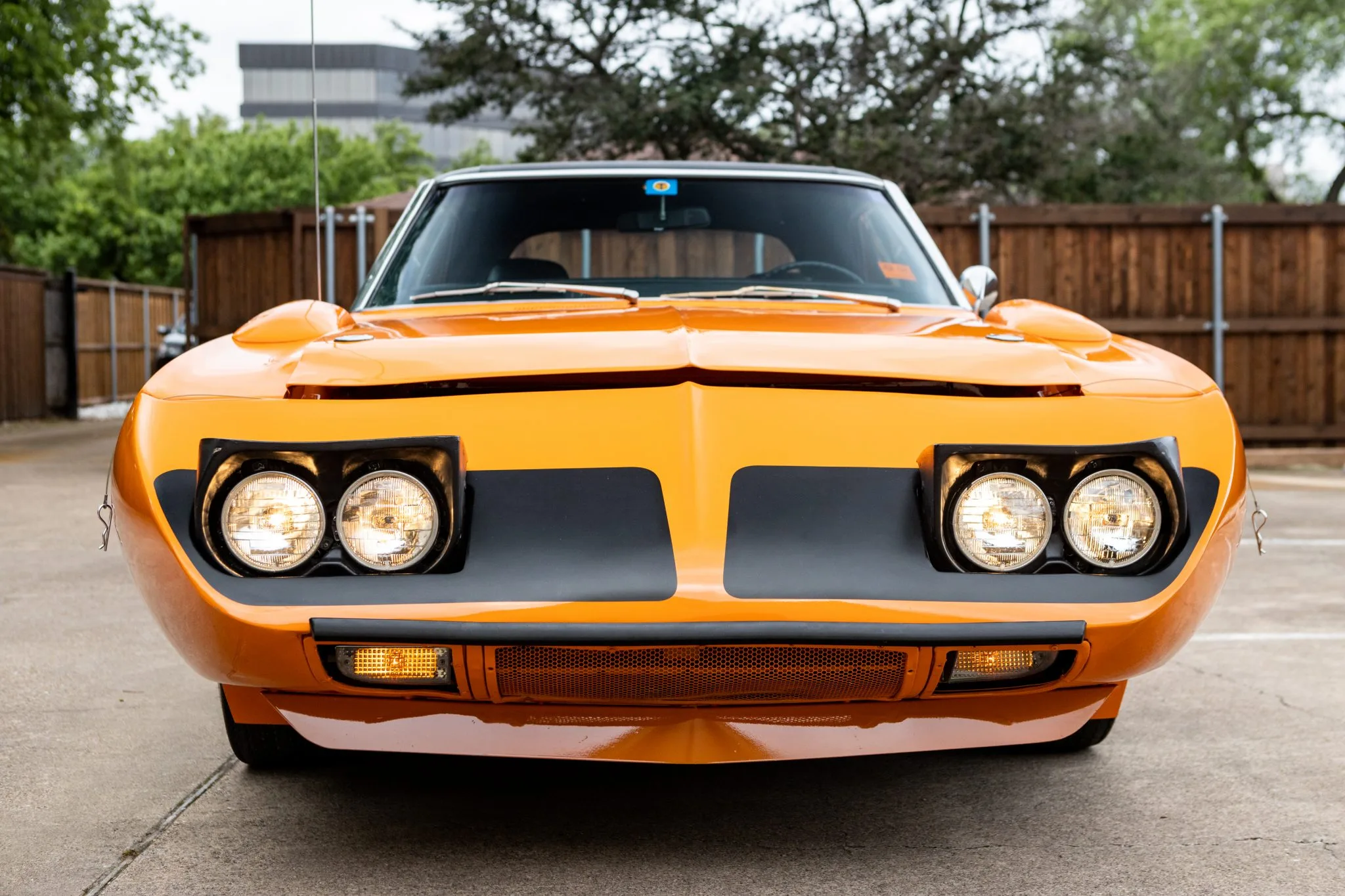
Plymouth introduced the Superbird to win at NASCAR by modifying a Roadrunner and installing either a 426 Hemi, a 440 Super Commando, or a 440 Commando with a six-pack carburetor. Capitalizing on the previous experience in 1969 with the Dodge specials they knew that certain streamlining options would improve performance. By adding an elongated, tapered nose, which increased the overall dimensions by 19 inches, and a tall pair of tail fins, along with retractable headlights to further avoid wind resistance, there was an increase in top speed but only at the high end of the velocity curve.

Gray-finished 15″ wheels wear chrome beauty rings and are mounted with Goodyear Polyglas GT white-letter tires. The power-assisted braking system utilizes front discs and rear drums.

The interior features bolstered front buckets and a rear bench with black upholstery and white piping. Road Runner–branded mats protect the matching black carpeting, and an AM radio is mounted in the center of the dashboard. A three-spoke steering wheel sits ahead of instrumentation that includes an 8k-rpm tachometer with a 5k-rpm redline and an inset analog clock, a 150-mph speedometer, and auxiliary gauges.

The Superbird’s meticulous attention to detail regarding its performance and handling dynamics helped it stand out from the competition. The iconic hot rod hit a sweet spot in its driving character, with its superior aerodynamic capabilities derived from its design and explosive powertrain options working in tandem to accentuate its racy persona and establish it as one of the most influential muscle cars ever.


